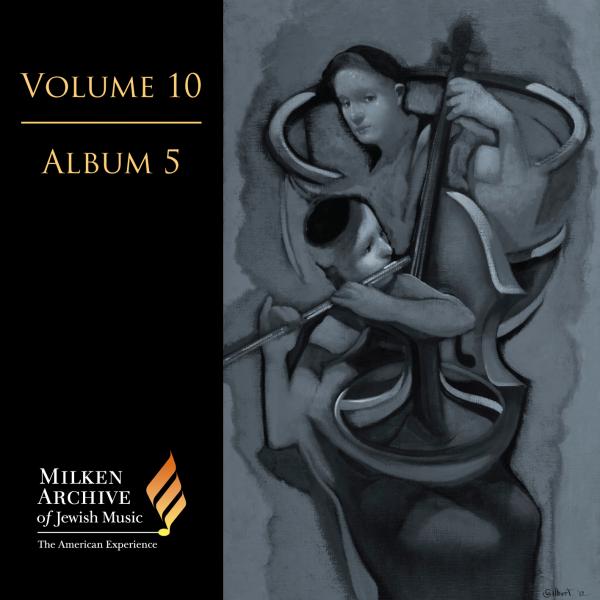Tracks
Liner Notes
John Zorn’s Kol nidre for string quartet is atypical of the bulk of his work in its conservatively reverential exposition and in its notational precision, which calls for no improvisation. And it is neither a setting nor an arrangement of that famous Yom Kippur signature melody. Rather, it is a clever, imaginative, and perfectly respectful exploration of barely recognizable snippets (confined for the most part to as few as two pitches continually transposed, extended, and developed) of only three of the constituent motives and phrases of the traditional and exclusive kol nidre melody in the Ashkenazi rite. An entirely original composition that illustrates Zorn’s classical capabilities, it relies on traditional source material only as a departure point, evoking the mood of supreme awe and somber introspection that governs the holiest of days on the Jewish calendar, the Day of Atonement.
The kol nidre text is recited or sung just prior to sundown on the eve of Yom Kippur. It is an early medieval legal formula in Aramaic that absolves Jews, in advance, of all vows that may be made in the new year (“from this Yom Kippur until the next”) that do not affect the interests of others and that might be made rashly, impulsively, unwittingly, or under duress. It is a petition for release from vows between man and God, not between persons.
This kol nidre melody is one of the group of fixed tunes of the Ashkenazi rite known collectively as themissinai tunes, which date to the medieval Rhineland communities and have remained in continuous use to this day throughout the Ashkenazi world. Apart from biblical cantillation and possibly certain derived modalities, the missinai tune tradition forms the oldest musical layer of minhag Ashkenaz—the Ashkenazi custom, or rite, that is embraced by Jews whose ancestry dates to western, central, and east-central Europe.
This particular melody was probably one of the latest annexations to the missinai tune category (possibly as late as the 15th century, with the first documentation in the 16th century) as a fixed tune in all Ashkenazi synagogues throughout the world. It has no known discretionary alternative, apart from reasonable variation and extension that still preserves its audible identity. The melody has remained ingrained in collective Ashkenazi Jewish consciousness as a sine qua non of the High Holy Days—more so than any other missinai tune and, arguably, more deeply than any other synagogue melody for any occasion. It has even spilled over into the popular entertainment realm, divorced from its liturgical context altogether. Eventually it acquired pop versions and arrangements even for non-Jewish performers, such as Johnny Mathis, who included it in a slick but “soulful” rendition on an LP recording in the 1950s.
The traditional kol nidre missinai melody is really a conglomerate series and assortment of loosely related, individual, and separable motifs and phrases that have acquired variants over time—and from one generation to another—rather than a precise tune in the Western sense (i.e., the Western “closed form” with a fixed beginning, middle, and conclusion, or an established order of phrases and sections). Its complexity probably reflected the structural properties of certain ornate, labyrinthine Western medieval song forms. But its free form—in which those constituent motifs can be alternated, reordered, repeated, repositioned, and even improvised in different ways, almost as a mix-and-match procedure—reflects the equally significant inherited Near Eastern influences that were operative even on the early formulation of Ashkenazi tradition.
Although Zorn’s piece draws exclusively on a few fragments of these motives and on bits of the original modality, some of the principal operative features of those motives—especially the identifying intervals—are not present, even in the initial statement. Yet those are the very features that would provide audible reference to the melody, while Zorn’s selected fragments are not sufficient to do so. Without prior knowledge of the title, therefore, the identity of the kol nidre tune is not necessarily recognizable even to those thoroughly familiar with it—especially in the absence of the rhythmic parameters of the words. If minimalism amounts to stripping down to the bare essentials, then this treatment might be considered “radical” or “minimal” minimalism, since even the basic skeleton of the signature opening phrase is reduced simply to the first two pitches: the tonic and the raised seventh (leading tone) of the scale, which could apply to any number of unrelated tunes. Still, once it is realized that the piece is inspired by kol nidre, the allusions to its motifs, however fragmentary, do make musical sense in their continuous permutations, alterations, and transpositions. Most of the linear movement occurs in parallel perfect fourths in the inner voices, suggesting the antiquity of liturgical chant. The outer voices provide a sustained pedal point effect.
Written in 1996, this piece shows Zorn capable of behaving himself with dignity when he so chooses and creating a piece of genuine Judaic connection and content. Among its many performances was one on September 11, 2002, by the string quartet Ethel at the site of the massacre of civilians at New York’s World Trade Center, for a ceremony marking the first anniversary of the Arab-Islamic attack on America. There are several alternate versions of the piece, including one for string orchestra and another for clarinet quartet.
Credits
Composer: John ZornPerformers: Steven Doane, Cello; Ilya Kaler, Violin; George Taylor, Viola; Perrin Yang, Violin
Publisher: Carl Fischer Inc.
